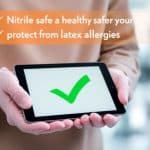Ever had that annoying itch after wearing a cute piece of jewelry, or maybe a nagging rash that shows up after using certain skincare products? You’re not alone. Metal allergies can be a tricky tango, especially when they’re starting to dance on your hormone regulation stage. Sounds intertwined, right? Well, hang tight, and let’s break this down together.
What’s Up with Metal Allergies?
Okay, first things first—what are we talking about when we say “metal allergy”? Simply put, it’s when your body decides to throw a tantrum at certain metals, most commonly nickel, but others like cobalt and chromium can cause trouble too. Your skin might flare up with a red, itchy rash wherever the offending metal has touched. Not so fun, right? It’s known as contact dermatitis.
This allergic reaction can range from a mild annoyance to a real issue, affecting self-esteem, comfort, and health. The big question for many is, “Can these metal reactions mess with hormone regulation?” Yep, let’s dive into that.
The Connection Between Metal Allergies and Hormone Regulation
Hormones: A Quick 101
Let’s pause here for a tiny but important detour. Hormones are basically your body’s messengers. They sprint around your system, making sure your metabolism, mood, growth, and—ahem—immune system are playing nice. When these levels get out of whack, well, havoc ensues.
Putting it Together: Metals and Hormones
Now, here’s where the chemical kitchen gets spicy. Research shows that some metals can influence hormone regulation, impacting how your body’s messengers function. Metals like lead and mercury, notorious for being toxic, can disrupt how hormones are metabolized. But what about those metals causing your skin drama like nickel?
Here’s the kicker: repeated or constant contact with these metals can cause chronic inflammation. Inflammation, by default, can become a stressor to your immune system. Your body’s efforts to fight this off? It might start hijacking your hormones into a tug-of-war scenario.

Recognizing the Symptoms: Is It a Metal Allergy?
You might be thinking, “Do I have this?” It’s worth figuring out. The symptoms are usually hard to ignore:
- Redness and Rash: Your skin feels hotter than a summer afternoon.
- Itching or Blistering: If scratching wasn’t here to save the day.
- Chronic Fatigue: Sometimes, prolonged exposure could leave you feeling exhausted.
Sounds familiar? It might be time to toy with the idea that metal sensitivities could be meddling with you more than you realize.
Common Metals That Might Cause You Grief
Nickel: The Culprit in Disguise
A star player in the allergy game, nickel is found in everyday items like belts, watches, earrings, and sometimes even in beauty products.
Cobalt and Chromium: The Sidekicks
Less common but equally aggravating. These guys are found in some jewelry, paints, and ceramics.
How to Find Balance: Living with Metal Allergies and Supporting Hormone Regulation
Navigating this tangled web doesn’t have to feel like an escape room challenge. Here’s how you can keep your skin, and your sanity, intact.
Avoid the Triggers

**Step 1: Identify the Sources** Dig around—check the labels, and don those detective caps! Anything that’s metal, be it an accessory, phone case, or even a kitchen gadget, demands a thorough check.
**Step 2: Patch Test New Products** This goes double for cosmetics and jewelry. Apply a small amount on your arm and leave it for a couple of days to observe any reactions. Worth the patience? Absolutely.
Embrace the Hypoallergenic
Shift towards hypoallergenic products. Trust me on this one, finding products labeled “nickel-free” or “hypoallergenic” is like finding your grail. These goodies offer peace to your skin and body.
Open Dialogues with Professionals
Don’t shy away from consulting with an allergist or dermatologist. Getting a professional opinion not only provides clarity but opens up new management avenues. Sometimes, hormone regulation can benefit too, because we’re talking about System Diplomacy right here!
Practical Tips for Supporting Hormones Naturally During the Frenzies
Balance Inflammation with Diet
Because, honestly, what we eat can either be a friend or foe to our hormones.
- Omega-3-Rich Foods: Think salmon or flaxseeds to help balance that inflammatory beast.
- Antioxidant Allies: Reach for berries, nuts, and leafy greens to bolster both immune and hormone health.
Mindfulness, the Underrated Companion
Stress has a direct hotline to messing with hormone regulation. Practicing mindfulness, be it through meditation, yoga, or just quiet moments with yourself, isn’t just yoga mat poster talk. Regular practice can steady your nerve centers and, in turn, potentially quiet those inflamed troops caused by metal allergies.

Regular Exercise
Nothing intense required… unless you’re into that. Regular calm activities like walking or swimming keep your glucocorticoid—the lousy party crasher in charge of stress—levels in check.
Keep a Journal
Feeling off? Jot it down. A record of your diet, skin reactions, and moods create a personal reference point. It might shine a light on hidden metal allergy triggers sneaking into your schedule or how your body’s hormone response is shifting.
Derailing Myths: Clearing the Mist
Sometimes we get stuck with misconceptions. Let’s break a few for good measure:
- All Metals Are Bad: Nah. Only a small subset is problematic for the allergic folks.
- Only Women Deal with This: Metal allergies don’t check genders or hormones. Anyone can buckle under their whiplash.
- Immediate Reaction Means No Metal Allergy: Some take time to present themselves. Keep an eye out for prolonged skin reactions.
Stepping Back: What’s the Takeaway?
Living in harmony with metal allergies while maintaining sane hormone regulation might sound like squeezing into your favorite old jeans—tight but possible! It’s about a dance … not just avoiding, but also shaping your routine to support both your immune system and hormonal wellness.
Understanding this linkage provides comfort in itself—a realization that those nagging symptoms may be untied to forgetfulness or daily stress but something you can manage through careful steps.
So, next time you clip that bracelet on, maybe pause for thought. Maybe it doesn’t weigh heavier than Age’s wisdom brochure, but staying conscious? A giant leap toward nurturing both your skin’s and your serene blend into your hormonal symphony. After all, a balanced life is truly everyone’s anthem.
Keep revisiting your relationship with your body. It tells one compelling story if you’re tuning in closely. If there’s one thing to walk away with—listen, adapt, adjust. Love the skin you’re within, balance your sweet hormones, and lean towards clear skies ahead.
Frequently Asked Questions
What causes a hormonal imbalance?
A hormonal imbalance can be caused by natural changes or stages in your life, including puberty, pregnancy, perimenopause, and menopause. Additionally, hormone levels can decrease dramatically after a partial or full hysterectomy. Other causes include tumors, adenomas, and autoimmune diseases that affect the endocrine glands[1][3][5).
What are the signs and symptoms of a hormonal imbalance?
The signs and symptoms of a hormonal imbalance can vary widely but may include irritability and fatigue, mood swings and depression, skin dryness and loss of elasticity, water retention and weight gain, osteoporosis and joint pain, less interest in sex, insomnia and other sleep disorders, and memory issues and difficulty concentrating[1][3][5).
How does hormone replacement therapy help with hormonal imbalances?
Hormone replacement therapy helps by restoring stable hormone levels, which can improve sleep, increase energy, enhance memory, improve concentration and focus, elevate mood and reduce mood swings, improve skin hydration, increase interest in sex, regulate weight and reduce water retention, and protect joints and bones[1][3).
What types of hormone replacement therapy are available?
There are several types of hormone replacement therapy, including systemic hormone therapy (in pill form, patches, rings, gel, cream, or spray), low-dose vaginal products (for vaginal and urinary symptoms), and bio-identical hormone replacement (which is structurally identical to human hormones and may have fewer side effects)[1][3).
References



